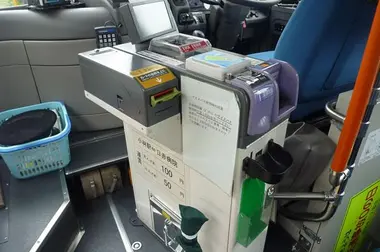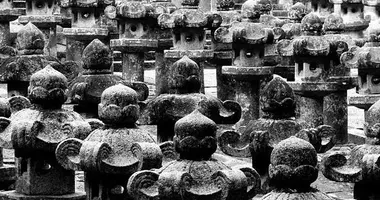Taking the bus in Japan
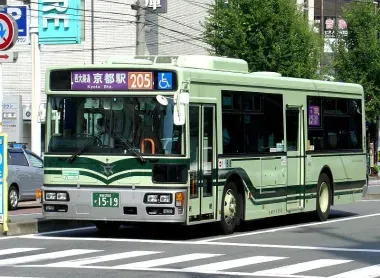
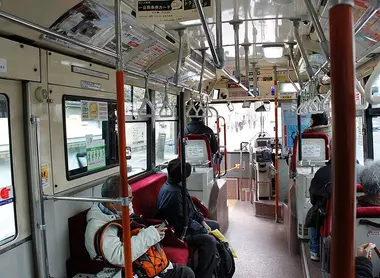
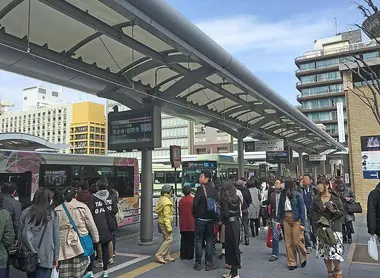
Japan's bus network is highly developed and efficient, offering a practical and economical alternative to trains and subways. Whether for short urban trips or long journeys between cities, Japanese buses are renowned for their punctuality and comfort. However, taking the bus in Japan can seem daunting for foreign visitors due to the differences in systems and the language barrier. In this article, we'll guide you through the intricacies of the Japanese bus system, the rules you need to follow and tips on how to travel with peace of mind. Whether you're in Kyoto, Tokyo or the remote countryside, you'll soon be ready to explore Japan by bus like a true local.
Understanding Japan's bus system
Japan's bus system is distinguished by its diversity and complexity. Unlike many countries where public transport networks are unified, in Japan buses can be managed by different private companies, just like trains. This can make navigation a little more complex for foreign visitors.
In big cities like Tokyo, you'll generally find two types of payment system:
- Fixed fare: You pay a fixed amount on entering or leaving the bus, regardless of the distance traveled. This is the simplest and most common system in urban areas.
- Variable fare: The price depends on the distance traveled. You take a numbered ticket on the way up and pay the amount corresponding to your number on the way down.
To make travel easier, we strongly recommend using an IC card such as Suica or PASMO. These prepaid cards are accepted on most buses and greatly simplify the payment process. Don't forget to check timetables in advance, as although generally reliable, buses can sometimes be delayed by traffic, especially in large cities.
The different types of bus and their particularities
In Japan, there are several types of bus, each with its own characteristics:
- City buses: These operate in cities and are generally smaller than their Western counterparts. They are essential in cities like Kyoto, where the subway network is limited.
- Intercity buses: These connect major cities and often offer an economical alternative to shinkansen. For example, the Tokyo-Kyoto journey by night bus can cost between 4,000 and 9,000 yen, compared with around 14,000 yen by high-speed train.
- Night buses: Very popular for long journeys, these buses can save you a night in a hotel. Seats generally recline and are fitted with a soft top for greater privacy.
- Tourist buses: In some tourist areas, there are buses specially designed for visitors, with stops at the main sites of interest.
Companies like Willer Express or JR Highway Bus offer long-distance bus services with different levels of comfort, from standard seats to "first class" seats with more space and extra facilities. Some companies even offer women-only buses for overnight travel, providing a safer option for solo female travelers.
How to pay for your bus journey
Payment for bus journeys in Japan can vary according to bus type and region. Here are the main methods:
- IC card: This is the simplest and most convenient method. Simplify your life by buying a prepaid PASMO or SUICA card! Simply scan the card as you get on and off the bus.
- Cash payment: For fixed-fare buses, insert the exact amount in the box provided when boarding or alighting. For variable-fare buses, take a ticket when boarding and pay the corresponding amount when alighting.
- Prepaid tickets: Some companies offer booklets of tickets or day passes, particularly useful for tourists.
For long-distance buses, it is generally necessary to book and pay in advance. Sites like Willer Express offer online reservations in English, which makes things much easier for foreign travelers.
Don't forget that if you don't have the exact change, most buses are equipped with an automatic money changer. However, it's always best to carry small change to avoid any inconvenience.
Rules and etiquette on Japanese buses
As with all aspects of life in Japan, there are a number of rules of etiquette to be observed when riding the bus:
- Silence: Avoid loud conversations and put your phone on silent mode.
- No food: It's generally frowned upon to eat or drink on public transport, except on long-distance buses.
- Give up your seat: Offer your seat to the elderly, pregnant women and people with reduced mobility.
- Line up: Wait your turn to board the bus, forming an orderly queue at the stop.
- Luggage: On city buses, avoid large pieces of luggage that could disturb other passengers.
On night buses, respecting other passengers' sleep is essential. Avoid making noise, switching on bright lights or moving around unnecessarily.
Finally, don't forget to signal your stop by pressing the appropriate button well in advance. Stop names are usually announced, but it can be useful to track your journey on your smartphone so you don't miss your destination.
Long-distance buses: an economical alternative
Long-distance buses in Japan offer an economical and comfortable alternative to trains, particularly for night-time journeys. Here are some key points to know:
- Substantial savings: A Tokyo-Kyoto journey by night bus can cost between 4,000 and 9,000 yen, compared with around 14,000 yen by shinkansen.
- Variable comfort: Buses offer different levels of comfort, from standard seats to "first class" seats with more space and facilities.
- Journey time: Although longer than train journeys, overnight bus travel saves you a night's hotel accommodation.
- Online booking: Companies like Willer Express offer English-language websites for easy booking.
Long-distance buses are particularly popular with students and budget travelers. They are also practical for accessing destinations less well served by rail, such as certain mountainous areas or famous thermal springs.
When traveling by long-distance bus, bring comfortable clothes, a small blanket or sweater (the air-conditioning can be cold), and something to keep you occupied during the journey. Most buses make regular stops at well-equipped freeway service areas, where you can eat and use the toilets.
Using transport cards and passes to travel by bus
To simplify your bus travel in Japan, several card and pass options are available:
- IC cards: prepaid cards such as Suica, PASMO or ICOCA are accepted on most city buses throughout the country. They can also be used to pay in many shops.
- Japan Rail Pass: Although mainly used for trains, the Japan Rail Pass also gives access to certain buses operated by JR.
- Regional passes: Many regions offer specific passes for tourists, providing unlimited travel over a given period. For example, the Kansai Thru Pass for the Osaka-Kyoto-Kobe region.
- Long-distance bus passes: Some companies, such as Willer Express, offer passes for unlimited travel on their network for a set period.
These cards and passes can save you a lot of money, especially if you plan to travel a lot. For example, the Japan Bus Pass from Willer Express offers unlimited travel for 3, 5 or 7 consecutive days, which can be a great advantage when visiting Japan by bus.
Before buying a pass, make sure you calculate your planned journeys to ensure that the investment is worthwhile. Some passes must be purchased before arriving in Japan, so plan ahead!
Practical tips for taking the bus in Japan
Here are a few more tips to help you navigate the Japanese bus system with confidence:
- Plan ahead: Use apps like Google Maps or Japan Transit Planner to find the best routes and schedules.
- Learn a few key Japanese words: "Sumimasen" (excuse me) and "Arigato gozaimasu" (thank you very much) will come in handy.
- Arrive early: Japanese buses are punctual, so don't arrive at the last minute.
- Check for last-minute departures: Bus services generally stop earlier than trains, around 10-11pm in many cities.
- Use night buses for cheap travel: This is a great way to save on accommodation while you're on the move.
- Take advantage of tourist passes: Many cities offer passes that include public transport and entry to certain attractions.
Don't forget that bus drivers and bus station staff are generally very helpful, even if they don't speak English. Don't hesitate to ask for help if you're lost or have any questions.
Finally, keep in mind that getting around Japan cheaply is entirely possible by combining different modes of transport, including buses, wisely. With a little planning and these tips in mind, you're ready to explore Japan by bus like a true local. Enjoy your trip!


